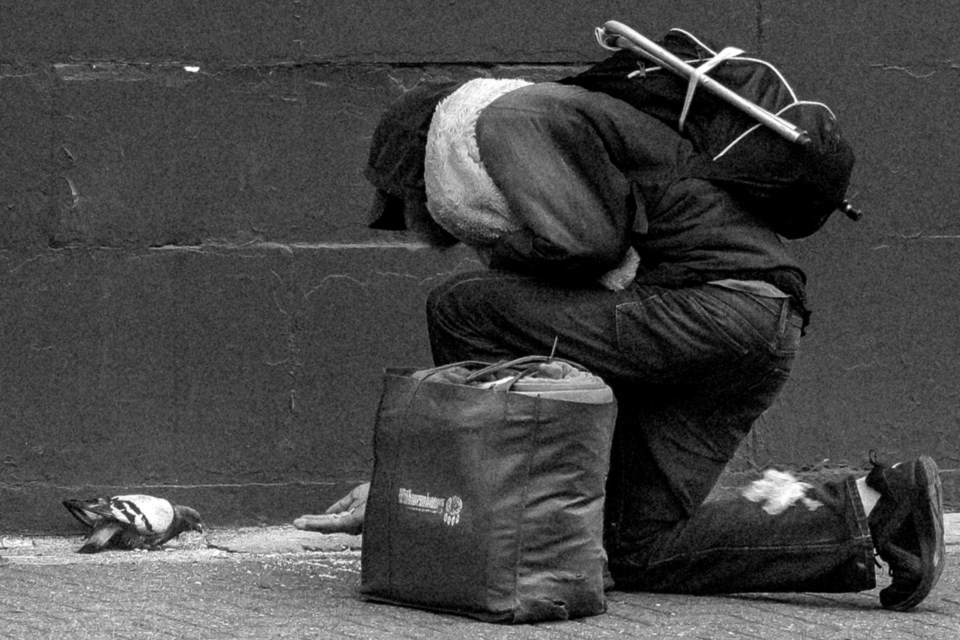There are only 19 photographs in the new exhibit at Sudbury's Gallery 6500, but each one is powerful. These black and white images tell a story many would prefer not to see. Life is not easy for the disadvantaged and those who smile despite their pain.
Rather than be a downer, the exhibit demonstrates humankind's capacity for resistance.
"Our Story in Black and White" opens Sunday, April 30 from 1-3 p.m. at the gallery located at the Steelworkers Hall on Brady Street.
Five photographers — Chantal Larochelle, Caio Higa, Debbie Anzinger McKay, Debb Trahan-Pero and Rita VanDerHooft — were challenged by Gallery 6500 curator Jo-Anne Marshall to submit images that illustrate "how social, political, economic, and/or environmental issues are impacting our community."
Gallery 6500's mandate is to exhibit "Art that Matters." A partnership between United Steelworkers Local 6500 and a committee of the Sudbury Arts Council, it was established in 2015. The gallery's board members are John Closs, Eric Delparte, Dieter Buse and David Robinson.
Marshall, a soft-spoken retired social worker and a dedicated social activist, has organized numerous thoughtful exhibits including last summer's "Lost and Found" about mental illness.
An earlier exhibit, "Truth be Told: Sudbury Confessions," was a participatory art installation that asked people to submit their secrets confidentially and later inspired Marshall to write a play about intimate stories.
In 2019, an exhibit that celebrated the accomplishments of Indigenous women from various backgrounds was extremely successful and has been installed at several other venues, including the South End branch of the Greater Sudbury Public Library and Sudbury Secondary School.
Marshall says she would like "The Inspirational Indigenous Women of Northeastern Ontario" exhibit to have a permanent home at N'Swakamok Native Friendship Centre.
For "Black and White", Marshall says she was clear she did not want photographs that invaded the privacy of homeless people. But she made an exception for a photograph by Caio Higa. The touching image shows a man who is struggling with his own survival extending his hand to feed a pigeon.
A Cambrian graphic arts student from Brazil, Higa's artist's statement says, "From childhood, I have been fascinated by design, composition, and photography. I was fascinated by the idea that these photographers could create raw, emotional pieces in settings where they had no control. Fascination was a driving factor for my decision to jump into practising street photography.
"My journey brought me to Sudbury where I would eventually further my studies and hone my photographic skills through the unique landscape that the city presents. Walking through the town with my (Fujifilm) X-T4, I saw authenticity.
"Being an outsider and arriving here as soon as the pandemic started, I saw the city’s struggle, businesses shutting down, and the population’s major concern for the future. I sought to portray a sense of solitude through these photos; to depict these blue times that we experienced."
Rita VanDerHooft captured another pandemic story. Her photograph, "Bursting at the Seams," speaks to the crisis created for animal rescue organizations when people realized they could not look after the pets they adopted during the pandemic.
'Black and White" will be on display for a couple of months at Gallery 6500. The gallery is open weekdays during the Steelworkers' office hours.
Vicki Gilhula is a freelance writer. Arts & Culture is made possible by our Community Leaders Program.



